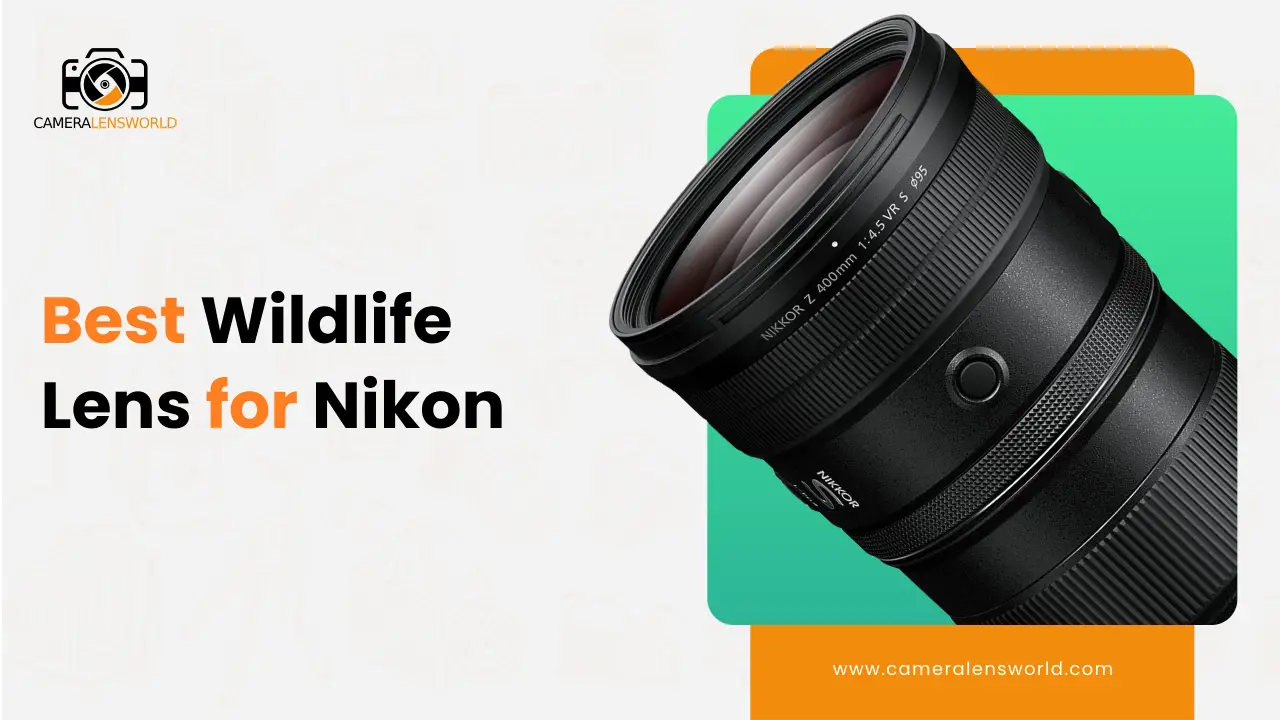
With a strong interest in wildlife photography, I hunt for the best Nikon lens for wildlife photography. I have researched the best camera lens for wildlife photography, and this time, I am here with the best Nikon choices.
This article, best Nikon Lens for Wildlife Photography is the result of a long and tireless search.
The appropriate lens can make or break your wildlife photography. It can mean the difference between catching breathtaking moments and completely missing them. In this guide, I have simplified the lens selection process. So, let’s adventure into the world of camera lenses to find the one that will take your wildlife photography to the next level.
Quick list of best Nikon lens for wildlife photography
Certainly, here’s a quick list of the best Nikon lens for wildlife photography.
- Nikon Z 400mm f/4.5 VR S
- Nikon 300mm f/4 AF-S
- Nikon 70-300mm f/4.5-5.6G ED IF AF-S VR
- Nikon S 70-200mm f/2.8
- Nikon 180-400mm f/4E TC1.4 FL ED VR
- Nikon Z 24-200mm f/4-6.3 VR
- Nikon DX 55-300mm f/4.5-5.6G ED
- Nikon 600mm f/4E FL ED VR
- Nikon AF-S FX 80-400mm f/4.5-5.6 ED VR
Detailed analysis of the best Nikon lens for wildlife photography
Certainly, here’s a more detailed breakdown of the analysis suited for the best Nikon lens for wildlife photography.
1. Nikon Z 400mm f/4.5 VR S
- The maximum aperture of the Nikon Z 400mm f/4.5 VR S lens is f/4.5, which governs how much light it can gather in low-light circumstances.
- The filter thread size for this lens is normally in the 112mm range.
- The maximum magnification is 0.16x.
- Regarding weather sealing, the Nikon Z 400mm f/4.5 VR S lens has premium weather sealing elements that protect against dust and moisture.
| Brand | Nikon. |
| Type | Telephoto lens. |
| Lens format coverage | FX format. |
| Compatible Mounting | Nikon Z. |
| Image Stabilization | The lens has image stabilization. |
| No.of diaphragm blades | 9 blades. |
| Lens construction | 19 elements in 13 groups. |
| Minimum focus distance | 2.5 m. |
| Weight | 1160 g. |
| Adjustment | STM stepping motor powers autofocus. |
Reasons to buy:
- Excellent optical quality.
- This lens is ideal for wildlife and sports photography.
- Autofocus is quick and precise.
- For a super-telephoto lens, it’s quite light.
- Image stabilization is excellent.
Reasons to avoid:
- Pricey.
- Bulky for everyday use.
2. Nikon 300mm f/4 AF-S
- The maximum aperture of the Nikon 300mm f/4 AF-S lens is f/4, which influences its capacity to gather light in a variety of lighting circumstances.
- The highest magnification is 1:3.7.
- This lens’ filter thread size is normally 77mm, a standard size for attaching filters and other accessories.
- Regarding weather sealing, the Nikon 300mm f/4 AF-S lens may lack substantial weather sealing characteristics.
| Brand | Nikon. |
| Type | Telephoto lens. |
| Lens format coverage | Full frame. |
| Compatible Mounting | Nikon F (FX). |
| Image Stabilization | No image stabilization. |
| No.of diaphragm blades | 9 blades. |
| Lens construction | 16 elements in 10 groups. |
| Minimum focus distance | 1.45 m. |
| Weight | 1440 g. |
| Adjustment | Silent Wave motor technology allows for a fast and silent lens. |
Reasons to buy:
- The image quality is excellent.
- Lightweight and compact.
- A prime telephoto lens at an affordable price.
Reasons to avoid:
- There is no image stabilization.
- Low-light performance is limited.
3. Nikon 70-300mm f/4.5-5.6G ED IF AF-S VR
- The maximum aperture of the Nikon 70-300mm f/4.5-5.6G ED IF AF-S VR lens ranges from f/4.5 to f/5.6 as you zoom in and out.
- This lens has a maximum magnification of 0.25x.
- This lens’ filter thread size is normally 67mm, which is the size used for attaching filters and other accessories.
- In terms of weather sealing, this lens does not normally come with a lot of characteristics.
| Brand | Nikon. |
| Type | Telephoto lens. |
| Lens format coverage | Full frame. |
| Compatible Mounting | Nikon F (FX). |
| Image Stabilization | The lens has image stabilization. |
| No.of diaphragm blades | 9 blades. |
| Lens construction | 17 elements in 12 groups. |
| Minimum focus distance | 1.5 m. |
| Weight | 745 g. |
| Adjustment | The Internal Focus (IF) mechanism enables quick and quiet autofocusing. |
Reasons to buy:
- Sharpness from edge to edge.
- Near instant autofocus.
- The zoom range is versatile.
- Lightweight and compact.
Reasons to avoid:
- Premium lenses may not have the same optical quality.
- Weather sealing is limited.
4. Nikon S 70-200mm f/2.8
- The Nikon Z 70-200mm f/2.8 lens features a constant maximum aperture of f/2.8 throughout the zoom range, making it ideal for low-light photography.
- The highest magnification is 0.2x.
- The filter thread size for this lens is 77mm, allowing for the attachment of filters and accessories.
- Regarding weather sealing, the Nikon Z 70-200mm f/2.8 lens is frequently equipped with weather sealing features, offering dust and moisture protection.
| Brand | Nikon. |
| Type | Telephoto lens. |
| Lens format coverage | Full frame. |
| Compatible Mounting | Nikon Z. |
| Image Stabilization | The lens has image stabilization. |
| No.of diaphragm blades | 9 blades. |
| Lens construction | 21 elements in 18 groups. |
| Minimum focus distance | 0.5 m. |
| Weight | 1440 g. |
| Adjustment | Autofocus. |
Reasons to buy:
- A fast and consistent f/2.8 aperture for low-light photography.
- The zoom range is versatile.
- Excellent optics.
- Autofocus performance that is both precise and speedy.
Reasons to avoid:
- Size and weight are notable.
- More expensive.
5. Nikon 180-400mm f/4E TC1.4 FL ED VR
- The Nikon 180-400mm f/4E TC1.4 FL ED VR lens features a constant maximum aperture of f/4 over its zoom range, which is useful for maintaining a consistent aperture for different focal lengths.
- The highest magnification available is 0.25x.
- This lens’ filter thread size is normally around 40.5mm, allowing the insertion of filters and accessories.
- This lens is frequently supplied with weather sealing features, protecting against dust and moisture and making it suited for outdoor and bad weather settings.
| Brand | Nikon. |
| Type | Telephoto lens. |
| Lens format coverage | F mount DSLR. |
| Compatible Mounting | Nikon FX. |
| Image Stabilization | The lens has image stabilization. |
| No.of diaphragm blades | 9 blades. |
| Lens construction | 27 elements in 19 groups. |
| Minimum focus distance | 2 m. |
| Weight | 3500 g. |
| Adjustment | Autofocus. |
Reasons to buy:
- For versatility, the zoom range is extensive.
- A 1.4x teleconverter is built in for increased reach.
- Excellent optics.
- VR (Vibration Reduction).
Reasons to avoid:
- It may not be as portable for daily use.
- Maximum aperture is restricted for low-light circumstances.
6. Nikon Z 24-200mm f/4-6.3 VR
- The Nikon Z 24-200mm f/4-6.3 VR lens features a variable maximum aperture that goes from f/4 at the wide end to f/6.3 at the telephoto end, which is standard for a lens with such a broad zoom range.
- The highest magnification is 0.28 x.
- This lens’s filter thread size is normally 67mm, allowing you to attach filters and other accessories.
- In terms of weather sealing, this lens is not recognized for having significant weather sealing characteristics.
| Brand | Nikon. |
| Type | Telephoto lens. |
| Lens format coverage | Full frame. |
| Compatible Mounting | Nikon Z. |
| Image Stabilization | The lens has optical stabilization. |
| No.of diaphragm blades | 7 blades. |
| Lens construction | 19 elements in 15 groups. |
| Minimum focus distance | 0.5 m. |
| Weight | 570 g. |
| Adjustment | Autofocus. |
Reasons to buy:
- The zoom range is versatile.
- For a superzoom lens, it’s small and light.
- Prices are reasonable.
- VR (Vibration Reduction) is used to improve stability.
Reasons to avoid:
- Variable aperture affects low-light performance.
- Maximum telephoto aperture limited.
7. Nikon DX 55-300mm f/4.5-5.6G ED
- The Nikon DX 55-300mm f/4.5-5.6G ED lens features a variable maximum aperture that spans from f/4.5 at the wide end to f/5.6 at the telephoto end, typical of telephoto zoom lenses.
- The highest magnification is 1/5.5.
- This lens’ filter thread size is normally 58mm, allowing you to attach filters and accessories of that size.
- In terms of weather sealing, this lens does not often have extensive weather sealing measures.
| Brand | Nikon. |
| Type | Telephoto lens. |
| Lens format coverage | DX-format APS-C cameras. |
| Compatible Mounting | Nikon F (DX). |
| Image Stabilization | The lens has image stabilization. |
| No.of diaphragm blades | 9 blades. |
| Lens construction | 17 elements in 11 groups. |
| Minimum focus distance | 1.4 m. |
| Weight | 530 g. |
| Adjustment | Autofocus. |
Reasons to buy:
- Image stabilization is included.
- The optical circuit includes optical elements.
- A lens hood with a rear mount is included.
- Excellent maximum zoom for macro photography.
Reasons to avoid:
- AF is quite slow.
- Focusing issues at low temperatures
- It is impossible to switch between stabilization modes quickly.
8. Nikon 600mm f/4E FL ED VR
- The Nikon 600mm f/4E FL ED VR lens has a fixed maximum aperture of f/4 that remains constant throughout its operation, providing exceptional performance in a wide range of lighting circumstances.
- The lens has a maximum magnification of 0.14x.
- This lens’s filter thread size is normally around 40.5mm, allowing the insertion of filters and other accessories.
- Regarding weather sealing, the Nikon 600mm f/4E FL ED VR lens is normally fitted with weather sealing elements, which provide dust and moisture protection, which is critical for outside and bad weather settings.
- Nonstick fluorine coating makes wiping away water, grime and smudges easier.
| Brand | Nikon. |
| Type | Telephoto lens. |
| Lens format coverage | Full frame (FX) SLRs. |
| Compatible Mounting | Nikon F. |
| Image Stabilization | The lens has vibration reduction. |
| No.of diaphragm blades | 9 blades. |
| Lens construction | 16 elements in 12 groups. |
| Minimum focus distance | 4.4 m. |
| Weight | 3810 g. |
| Adjustment | Auto Focus (AF) System with Silent Wave Motor. |
Reasons to buy:
- Excellent optics.
- Fast, constant f/4 aperture for low-light photography.
- Excellent construction.
- VR reduces vibration for stability.
Reasons to avoid:
- The weight makes it less portable.
- Extended use may require support.
9. Nikon AF-S FX 80-400mm f/4.5-5.6 ED VR
- The Nikon AF-S FX 80-400mm f/4.5-5.6 ED VR lens has a variable maximum aperture that ranges from f/4.5 at the wide end to f/5.6 at the telephoto end, as is typical of telephoto zoom lenses.
- Maximum magnification is 0.2x.
- This lens’s filter thread size is normally 77mm.
- In terms of weather sealing, this lens usually has some weather sealing, which protects against dust and moisture and makes it acceptable for outdoor photography in a variety of weather conditions.
| Brand | Nikon. |
| Type | Telephoto lens. |
| Lens format coverage | Full frame. |
| Compatible Mounting | Nikon F (FX). |
| Image Stabilization | The lens has vibration reduction. |
| No.of diaphragm blades | 9 blades. |
| Lens construction | 20 elements in 12 groups. |
| Minimum focus distance | 1.75 m. |
| Weight | 1570 g. |
| Adjustment | Autofocus (auto) and manual focus (manual) options are present. |
Reasons to buy:
- Flexibility in Zoom.
- Good for sports and wildlife photography.
- VR reduces vibration for stability.
- Cost-effective telephoto zoom lens.
Reasons to avoid:
- Significant size and weight.
- Optics may be lower than premium lenses.
What to look for in the best Nikon lens for wildlife photography
1- Aperture
Consider the aperture when looking for the best Nikon lens for wildlife photography. Look for lenses with larger apertures, such as f/2.8 or f/4, which let more light into the camera, which is essential for wildlife photography in low-light conditions.
These lenses provide better depth of field control, allowing you to isolate your subject against a blurred background. Lenses having variable apertures, such as f/4.5-5.6, might be cost-effective solutions for adaptability in a variety of wildlife situations.
In addition, look for lenses with sophisticated coatings to reduce glare and improve image quality, ensuring that your Nikon lens optimizes the potential of your wildlife photography.
2- Focusing speed
Focusing speed is important when selecting the best Nikon lens for wildlife photography. Look for lenses with quick and precise autofocus systems, which are sometimes referred to as “silent wave motor” (SWM) or “ultrasonic motor” (AF-S).
These technologies allow quick and precise focusing, essential for capturing fast-moving wildlife. Consider lenses with adjustable focus choices, such as focus limiters and focus memory settings, to help you react rapidly to changing wildlife situations.
Reading reviews from wildlife photographers and testing the focusing speed in real-world settings can provide significant insights into a lens’s performance, ensuring it fits the demands of wildlife photography.
3- Focal length
When looking for the best Nikon lens for wildlife photography, focus length is crucial. Longer focal length lenses, often in the 200mm to 600mm range, can bring distant wildlife subjects closer while keeping a safe distance.
Telephoto lenses with long focal lengths are excellent for photographing secretive and frightened animals. Consider zoom lenses with varied focal lengths, such as 70-300mm or 200-500mm, for adaptability in various wildlife situations.
The appropriate focal length in wildlife photography provides the magnification required to adequately frame your subject and get those spectacular close-ups of creatures in their natural habitat.
4- Compatibility
Compatibility is essential when looking for the best Nikon lens for wildlife photography. Check that the lens is intended for Nikon cameras, as stated by the “Nikon F-mount.” Consider lenses that match the sensor size of your camera, such as DX or FX, for optimal coverage.
Look for teleconverter compatibility to lengthen the focal length, which is essential for distant animal photos. Look for image stabilization features, which improve compatibility with hand-held shooting and reduce blur in wildlife photos.
Furthermore, consider whether the lens is compatible with your camera’s autofocus system since some lenses may work better with specific autofocus settings, ensuring flawless and rapid focusing for your wildlife photography needs.
Best Nikon lens for wildlife photography FAQs
What aperture should I use for wildlife photography?
Which settings should you use when photographing wildlife? Depending on the species, the shutter speed ranges from 1/250s to 1/2500s. Depending on the lens, the aperture ranges from f/2 to f/6. ISO: 200-800, depending on the light and the shutter speed and aperture settings.
How many megapixels do I need for wildlife photography?
If you want to maximize your megapixels, acquire a 50-60MP camera, such as the Sony a1 or a7R V. If you’re looking for low-light capability, get a 20-30MP camera like the Canon EOS-1D X Mark III or the Nikon D6.
Is 200mm enough for wildlife photography?
This is why most enthusiast bird and wildlife photographers use camera lenses with a focal length of 400mm or greater. A camera lens with a 200mm focal length can capture wonderful photographs of birds, but species that refuse to go too close or move too quickly (such as warblers) will be difficult.
How do I choose a wildlife lens?
The focal length of your lens is usually dictated by the wildlife you picture. Because most wildlife photography is done at a distance, most photographers prefer a focal range of 400mm or larger. However, depending on your animal topic, you may want a wider focal range.
Conclusion
In conclusion, choosing the best Nikon lens for wildlife photography requires careful consideration of various variables. Although preferences and shooting situations differ, the finest Nikon lens for wildlife photography captures the beauty and soul of animals, making your wildlife photography absolutely spectacular.
In case you’re new to the world of photography. In such case, I recommend reading my earlier post, “Beginner’s Guide for Buying a Camera Lens,” which lays the groundwork for understanding lenses.
Happy shooting!

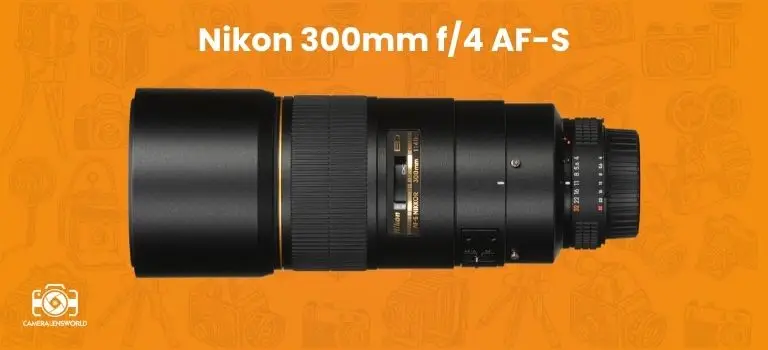
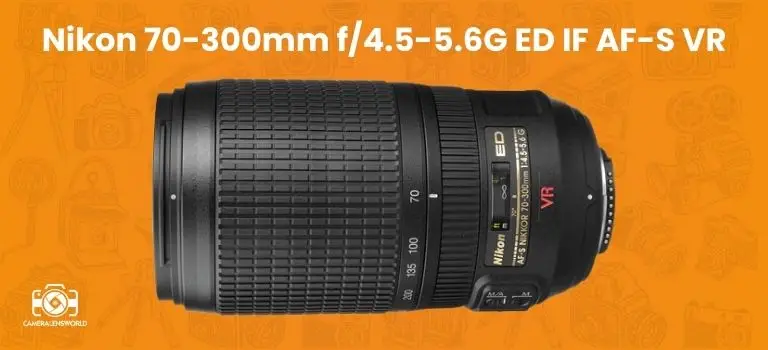
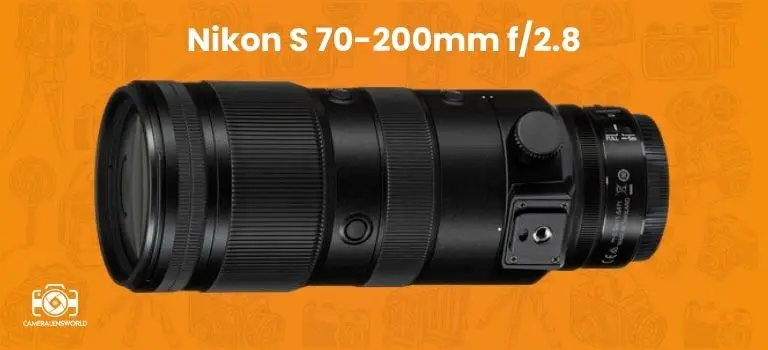


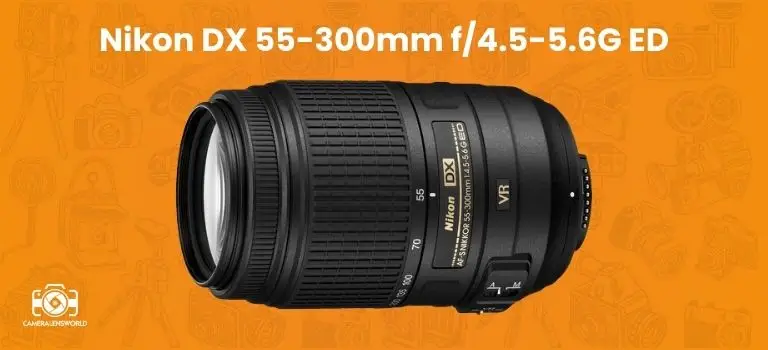
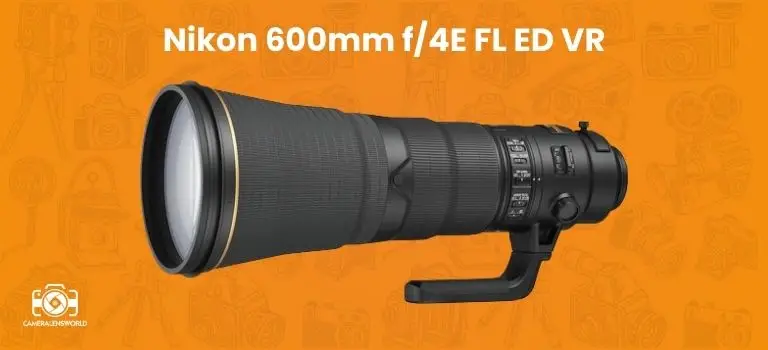
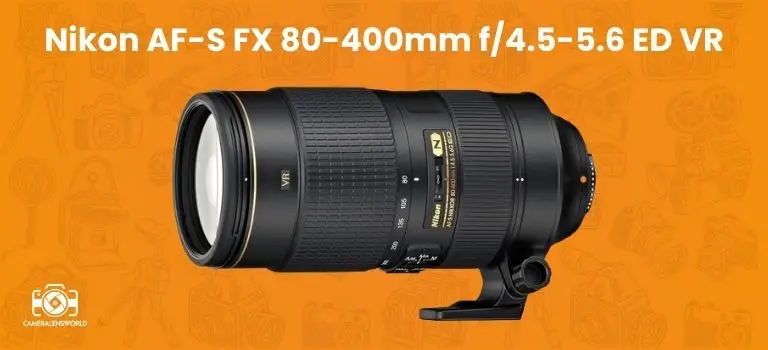

Leave a Reply
You must be logged in to post a comment.